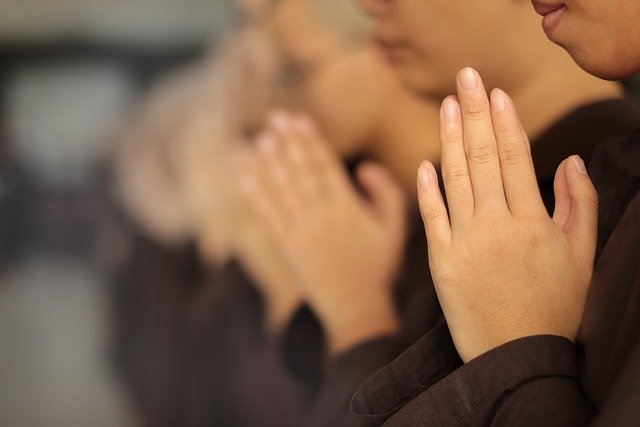What are the origins of mindfulness
What are the sources of care? Tracebacks from Hinduism, Christianity, Muslim, and Buddism to common careful practices in the West.
Care has gotten well known in the advanced world for stress help, enthusiastic administration and keeping up mental core interest. In any case, it’s anything but an in vogue social second or treatment. In actuality, care discovers its inceptions back to over 2500 years.
What are the roots of care? Realizing them causes you acquire a more profound arrangement and more important practice. This article offers a thorough audit.
Care is an old method with present day benefits.
Care is the ability to zero in on the “present” second. In any case, its antiquated strict birthplaces gave more importance to this training than essentially being available. It embraces “living a healthy life and having cherishing generosity to every aware being” (Kuan, 2007, Visionpsychology).
“Care follows its roots back to different strict and mainstream customs. These incorporate Hinduism, Christianism, Muslim, Buddhism before the advanced mainstream rehearses. There are numerous careful practices. They range from an assortment of contemplation customs to yoga and Tai Chi. Most as of late, there are an ever increasing number of non-strict careful procedures and mindfulness raising treatments. Without a doubt “individuals have been practicing mindfulness for millennia, regardless of whether all alone or as a feature of a bigger custom” (PositivePsychology).
Understanding the starting points and theory of careful practices presents to us a more extensive knowledge and practice profundity. So what are the birthplaces of care? Allow us to investigate some of them.
The foundation of care in Hinduism
Many imagine that care practice lies in Buddhism. All things considered, the historical backdrop of care really goes a lot further back. It right off the bat connects to the yogic acts of the Hindu public. They dated somewhere close to 2300BC and 1500BC in the Indus Valley, close to current Pakistan.
Hindu sacred text has numerous references to contemplation, quietness, and acknowledgment. These are exceptionally significant components of present day care.
For instance, “Dhyāna” in Hinduism implies thought. It is worked on during yoga works out. In this strategy, one accomplishes samadhi – a condition of reflective cognizance. The psyche turns out to be extremely still and converges with the object of consideration. It notices its inside comings and goings without being lost in them. (Visionpsychology)
Essentially, the Sanskrit expression smriti signifies “recalling”. The thought is to recall ourselves and to be available with the connection among ourselves and the objects of our mindfulness. “Care is a preliminary practice for raja yoga. It prompts the high level fulfillment of higher conditions of awareness. Eventually, one looks for the association with the Divine as the inescapable and adoring awareness inside us” (Hinduism Today)
Care in Buddhism
By and large, Buddhism shows care as a route toward edification (Nandan and Jungubhai, 2013). Buddhism was established around 400-500BC by Siddhārtha Gautama (the Buddha). Buddhists use reflection among others to achieve a condition of extreme cognizance. It permits individual attunement with a higher reason throughout everyday life.
In Buddhism, Sati (from Pali: सति; Sanskrit: स्मृति smṛti) is mindfulness or awareness. It is a profound or mental staff (indriya) that frames a fundamental piece of Buddhist practice (Wikipedia). Sati implies the “second to second familiarity with present occasions”. It additionally signifies “making sure to know about something”. It is the main factor of the Seven Factors of Enlightenment.
To accomplish the all-knowing supernatural insight, Buddhist experts train care not just in proper reflection. Being available in day by day exercises like strolling, sitting, eating, working… is likewise significant. His Holiness the fourteenth Dalai Lama urges Buddhists to “develop mindfulness and care during the post-contemplation time frames” (The Dalai Lama, Stages of Meditation, Rider, 2001, 63).
Thich Nhat Hanh, a Vietnamese Buddhist Zen ace got care to notoriety the West. He presented straightforward at this point significant lessons on careful practices in every day life. His book ‘The supernatural occurrence of care’s has been a motivation for ages of Buddhist and non-Buddhist professionals in present day times.
Careful practices in Christianism and Islam
Albeit significantly affected by Hinduism and Buddhism, the historical backdrop of care goes past these two practices. Care likewise has establishes in Judaism, Christianity, and Islam (Trousselard et al., 2014).
In Christianity, “Jesus talks about the deepest I Am. It is the quintessence of the personality of each man and lady, each life-structure indeed. He discusses the existence that you are. Some Christian spiritualists have considered it the Christ inside” (Eckhart Tolle).
Another notable model in Christianity would be Brother Lawrence. He stressed monitoring the ‘Essence of God’ in “Rehearsing the Presence of God” (Lawrence, 2004).
Islam additionally stresses care as seen in “Muraqabah”. It implies having a constant mindfulness: Allah is continually watching (Al-Jawziyyah, 2016 – Visionpsychology).
The fundamental reason of Mindfulness in Islam is that there is an unadulterated center (THE FITRAH) inside everybody. Each youngster is brought into the world with it independent of position, ideology, and religion. Muslims evaluate this virtue through the practices of Mindfulness.
“Recovered from the dull layers of life’s soiling encounters and cleaned. It will lift our heart, brain, and body into wellbeing, harmony, and bliss”. (Mahmudahinstitute.org)
Common care brought toward the West
As mainstream rehearses, care was brought toward the West truth be told, as of late. It was first presented during the 1970s by Kabat-Zinn in scholarly and clinical settings. He gave care preparing as a technique for stress decrease. He established the Center for Mindfulness at the University of Massachusetts Medical School.
Beside scholarly science, Jack Kornfield, Sharon Salzberg, and Joseph Goldstein additionally assumed a pivotal part. They carried care toward the West through reflection rehearses. They established the Insight Meditation Society (IMS) in 1975.
Care has been from that point forward presented in numerous organizations. For instance, clinical organizations, health, sports, schools, and others. The vast majority of them are under the type of common reflection, yoga procedures and mindfulness preparing.
Therefore yoga has acquired significant prominence in the last 30-40 years in the West. Numerous wellness associations and private studios in western nations offer yoga without the unequivocal strict part.
Judo is another work on including care. It is acquiring fame in western culture. While not as well known as Yoga, Tai Chi offers people who battle to ‘stay still’… another method of rehearsing care. (Visionpsychology)
As an end
How about we return to your inquiry: “What are the sources of care?”. I trust the article presented to you some more clear thoughts. Undoubtedly, careful practices as known today in the cutting edge world, follow their causes back to antiquated occasions.
Care was drilled as right on time as Hinduism going back somewhere in the range of 2300BC and 1500BC. These were the old yoga practice of contemplation, quietness and acknowledgment.
Later on, in Buddhism, it is viewed as the main factor of the Seven Factors of Enlightenment. For instance… Sati, mindfulness, or awareness, structures a fundamental piece of Buddhist practice. The training was instructed by Buddha 2,5000 years prior. In current occasions, numerous customs, for example, Tibetan or Zen schools educate care.
Care additionally has establishes in different religions. For instance, rehearsing the Presence of God (Christianity) or having a nonstop familiarity with Allah (Islam) are instances of careful practices.
Mainstream care rehearses in the West begun as of late during the 1970s. They have the principle destinations of stress decrease or brain center improvement.
Interfacing with the inceptions of care and its antiquated established way of thinking acquires profundity and more successful practices. This is on the grounds that care isn’t just an instrument or treatment. It permits the Practitioners to figure out how to interface truly with their higher Self. We would then be able to include a significant vision. Therefore, our careful practices become a really extraordinary encounter.




